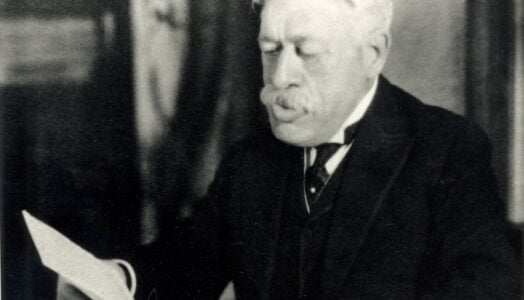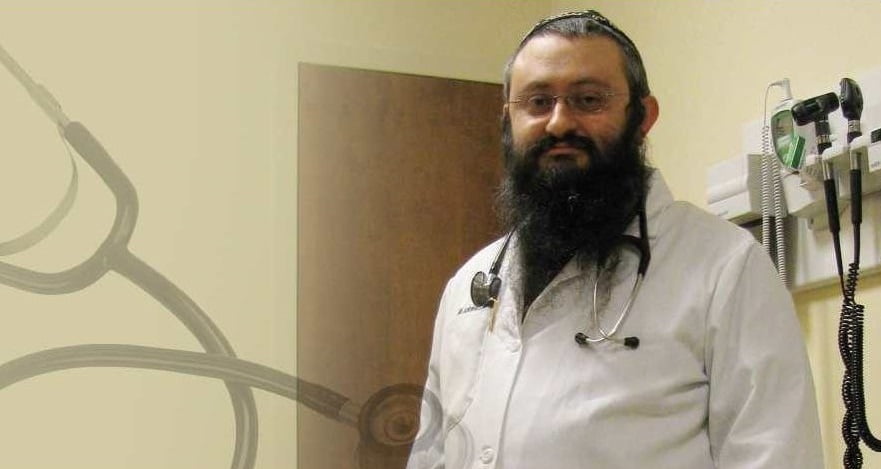A cancer treatment based on the concept that a patient’s immune system can be stimulated or enhanced to attack cancer. Dr. William B. Coley (1862-1936), a bone sarcoma surgeon was the first to study immunotherapy as a potential cancer treatment. For 40 years Coley injected streptococcal bacteria into cancer patients (primarily those with inoperable bone and soft-tissue sarcomas) in order to stimulate the immune system.
Coley was not an “alternative doctor” working in the shadows, but rather was the Chief of the Bone Sarcoma Unit at Memorial Hospital in New York, America’s first cancer hospital. As a result of his innovative work, Coley became known as the “Father of Immunotherapy.” Nonetheless, during his life, Coley was often criticized because his methods of treatment and patient follow-up were not consistent, and many colleagues could not believe his impressive results.
Cancer and Infection
William Coley was born in 1862, went to college at Yale, graduated from Harvard Medical School in 1888, and thereafter joined the staff of Memorial Hospital. Soon after beginning his professional career, Coley learned about a patient who had had an inoperable malignant tumor in his neck that disappeared after he developed erysipelas (a bacterial skin infection). Coley searched for this patient and when he found him discovered that he had evidence of cancer. Coley was intrigued and researched the medical/scientific literature for other patients who had cancer remission due to a concurrent bacterial infection. He found a number of sources, case histories, and citations including those from the well known physician Sir James Paget. In all, Coley was able to find over 40 cases in the literature documenting the beneficial effect of infections on tumors.
In 1891, Coley injected his first patient with streptococcal organisms and noticed the shrinkage of a malignant tumor. He treated other patients and two died from infection. Thereafter, Coley continued his treatments using a less virulent heat-killed streptococcal organism combined with a second organism (Serratia marcescens). This combination became known as Coley’s Toxin. By 1893, he had tried his toxin on ten patients, most of whom did well. By the end of his career, he had treated almost 1,000 cases. Other doctors used his modality to treat their own patients.
Results
According to a 1965 article that was published in A Cancer Journal for Clinicians (1):
“In 1952, a bibliography of the literature, and, in 1953, a report on 30 inoperable cases which had been treated by Coley’s mixed toxins and had survived thereafter for periods of from 1 to 47 years (20 cases had a survival of over 20 years) were published. The report is said to be based on a comparative analysis of over 1,200 cases treated with Coley’s toxins, and 300 cases in which intercurrent infections played a part. Over 270 cases were said to have shown complete regression of the tumor, but the 30 inoperable cases were selected for the report because the diagnoses had been confirmed by microscopic examination, and some information on their subsequent history was available. Of the 30 tumors, 7 were classified as carcinoma, 19 as various types of sarcoma, 2 as malignant melanoma, and 2 as giant cell tumors.”
A complete response rate of 22% (270 out of 1200) was impressive by the standards of the 1960’s and today. But, despite these results, the article states that the, “American Cancer Society has found no evidence that treatment with Coley’s mixed toxins results in any objective benefit in the treatment of cancer in human beings.” It is difficult to reconcile this conclusion with the results cited in the same article. Perhaps the results were simply not believed as they were authored by Mrs. Helen Coley Nauts, Executive Director of the New York Cancer Research Institute. Mrs. Nauts was the daughter of William Coley.
Helen Coley Nauts
Helen Coley Nauts was not a dilettante, but a distinguished cancer researcher in her own right. According to her obituary:
“Helen Coley Nauts, D.Sc. (Hon.), Pioneering Force for Cancer Immunology. Dies at 93 Helen Coley Nauts, founder of the Cancer Research Institute and the only other woman after Dr. Marie Curie to win the National Institute of Social Sciences’ Gold Medal for Distinguished Service to Humanity, died of natural causes on the morning of January 2, 2001. She was 93. She was one of the leading scholars in the field of cancer immunology,” according to Dr. Lloyd J. Old, Director of the Ludwig Institute for Cancer Research and pioneer in the field. Her research has led to wide recognition of the seminal importance of the work of her father, Dr. William B. Coley, and his use of bacterial vaccines in the treatment of cancer. As a consequence of her tireless effort, William B. Coley is now generally acknowledged as the “Father of Cancer Immunotherapy.”
Acceptance by the Medical Community
Coley’s work was alternately embraced and reviled by the medical community. His early work at the turn of the last century was during the advent of radiation therapy and the majority of cancer practitioners sided with radiation as the treatment of choice (in combination with surgery).
Many of the professional criticisms focused on Coley’s alleged poor record-keeping and follow-up, his use of at least thirteen different preparations of the toxins, and different methods of administration (i.e. intravenously, intramuscularly, or intra-tumor). Perhaps because of his variable use of the toxins, many doctors could not replicate his results.
Since Dr. Coley’s death, the field of immunology has developed into a sophisticated specialty. Scientists are studying the effect on tumors of tumor necrosis factor (TNF), interferons, streptokinase and many other cytokines, all related to the immune system. In fact, Bacille Calmette-Guérin (BCG) a vaccine against tuberculosis prepared from a strain of weakened live bovine tuberculosis bacillus is now accepted as the most effective intravesical agent for the treatment and prophylaxis of superficial bladder cancer. It also prevents bladder tumor recurrence and progression, increases the disease-free interval, and prolongs survival. Even the American Cancer Society has changed his position on Dr. Coley. Its website now states, “Scientific evidence suggests Coley toxins or other mixed bacterial vaccines (MBVs) may have a role in treating cancer when combined with other treatments.”
Status Today
In 1963, Coley’s Toxins were assigned “new drug” status by the Food and Drug Administration (FDA), making it illegal in the U.S. to prescribe this kind of therapy outside of clinical trials. Because the constituent ingredients of Coley’s Toxins are naturally occurring and thus not patentable, no clinical trials have been financed in recent years. However, one company has stated that it is working towards conducting clinical trials in Canada and the United States.(2) Reportedly, there are clinics both in the U.S., Europe and Mexico who still use Coley’s Toxins in cancer as an adjuvant or immune boosting therapy.
Today, Dr. Coley’s reputation in medicine is becoming more firmly established. According to a recent review that appeared in the Iowa Orthopedic Journal (3):
“William Coley’s intuitions were correct: Stimulating the immune system may be effective in treating cancer. He was a model of the clinician-scientist, treating patients and using his practice to initiate research and build theories. But he was a man before his time, and he met with severe criticism. Despite this criticism, however, Coley stuck with his ideas, and today we are recognizing their potential value.”
Citations
(1) Grabstald, h. Unproven Methods of cancer Treatment: Coley’s Mixed Toxins. CA Cancer J Clin. 1965 May-Jun;15:139-40
(2) MBVax Bioscience
(3) McCarthy EF, The toxins of William B. Coley and the treatment of bone and soft-tissue sarcomas. Iowa Orthop J. 2006;26:154-8.
A comprehensive review of the medical literature concerning Coley’s Toxins was performed by the M.D. Anderson Cancer Center which summarizes the results of 30 human studies performed with this modality. Biologic/Organic/Pharmacologic Therapies: Coley Toxins Detailed Scientific Review
Source: https://www.cancermonthly.com/doctors/dr-william-coley-father-immunotherapy/




